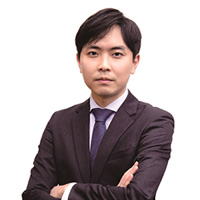National Museum holds exhibition of East Asian lacquerware
By Choi Si-youngPublished : July 9, 2024 - 15:02

The National Museum of Korea is holding a biennial joint exhibition on lacquerware as part of an effort to showcase cultural artifacts common to Korea, Japan and China that began in 2014.
The exhibition entitled “Lacquerware of East Asia” opens Wednesday, featuring 46 lacquerware pieces from the NMK, the Tokyo National Museum and the National Museum of China.
The three countries have long used the sap of lacquer trees, which renders a durable, shiny finish once painted onto wooden objects. The natural material was widely adopted for household items as well as personal ornaments.
The exhibition explores different lacquering techniques used by the East Asian countries. For Korea, the highlight is “najeonchilgi,” or a lacquered mother-of-pearl box inlaid with chrysanthemum and vine scrolls used to contain Buddhist scriptures during the Goryeo-era (918-1392). Boxes and tables made in Joseon, which succeeded Goryeo and came to an end in 1910, embrace more mundane motifs in their design, such as phoenixes, peonies, plum blossoms and bamboo.

Chinese lacquering centered on carving. Dish boxes, containers, tea cups and coasters have red and black lacquer carved on the surface. Clouds and dragons are some of the symbols that appear on ancient boxes and tables that frequently feature engraved lettering.
“Maki-e” is a Japanese lacquering technique that involves sprinkling gold or silver power on the surface of an already drawn pattern. Another layer of lacquer on top gives the piece a durable finish. A Buddhist sutra box with lotus pond design is a demonstration of such a technique. Personal ornaments as well as a saddle and stirrups show how the technique came to embody Japanese craftsmanship from the 12th to 14th century.

An official at the National Museum of Korea said it remains unclear why mother-of-pearl lacquerware was prominent in Korea.
“Since Koreans understand colors as shades of light, mother-of-pearl stands out. But all this is still a theory,” the official said, citing art historians studying the matter.
The three-month exhibition, set to end Sept. 22, is the latest high-profile cultural exchange among Seoul, Tokyo and Beijing. The directors of the three museums met Monday to discuss stepping up ties in their first in-person meeting since the COVID-19 pandemic. The next meeting of the directors will take place in Tokyo in 2026.





![[Herald Interview] How Gopizza got big in India](http://res.heraldm.com/phpwas/restmb_idxmake.php?idx=644&simg=/content/image/2024/11/20/20241120050057_0.jpg&u=20241120164556)


![[KH Explains] Dissecting Hyundai Motor's lobbying in US](http://res.heraldm.com/phpwas/restmb_idxmake.php?idx=644&simg=/content/image/2024/11/20/20241120050034_0.jpg&u=)
![[Kim Seong-kon] Farewell to the vanishing John Wayne era](http://res.heraldm.com/phpwas/restmb_idxmake.php?idx=644&simg=/content/image/2024/11/19/20241119050096_0.jpg&u=)
![[Graphic News] 70% of S. Koreans believe couples can live together without tying the knot: survey](http://res.heraldm.com/phpwas/restmb_idxmake.php?idx=644&simg=/content/image/2024/11/19/20241119050098_0.gif&u=)







![[Today’s K-pop] Blackpink’s Jennie, Lisa invited to Coachella as solo acts](http://res.heraldm.com/phpwas/restmb_idxmake.php?idx=642&simg=/content/image/2024/11/21/20241121050099_0.jpg&u=20241121172748)